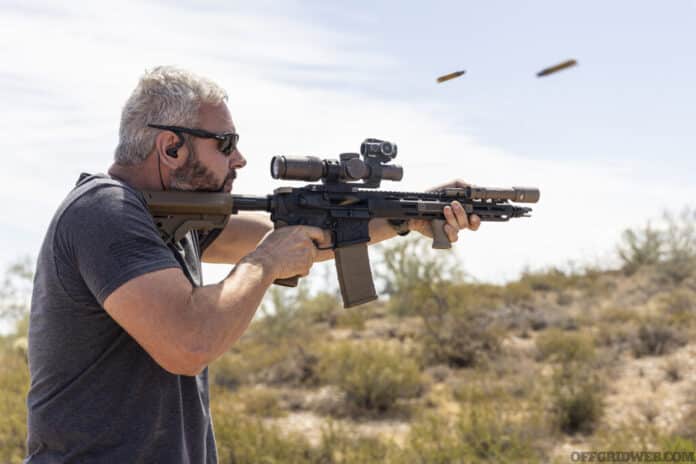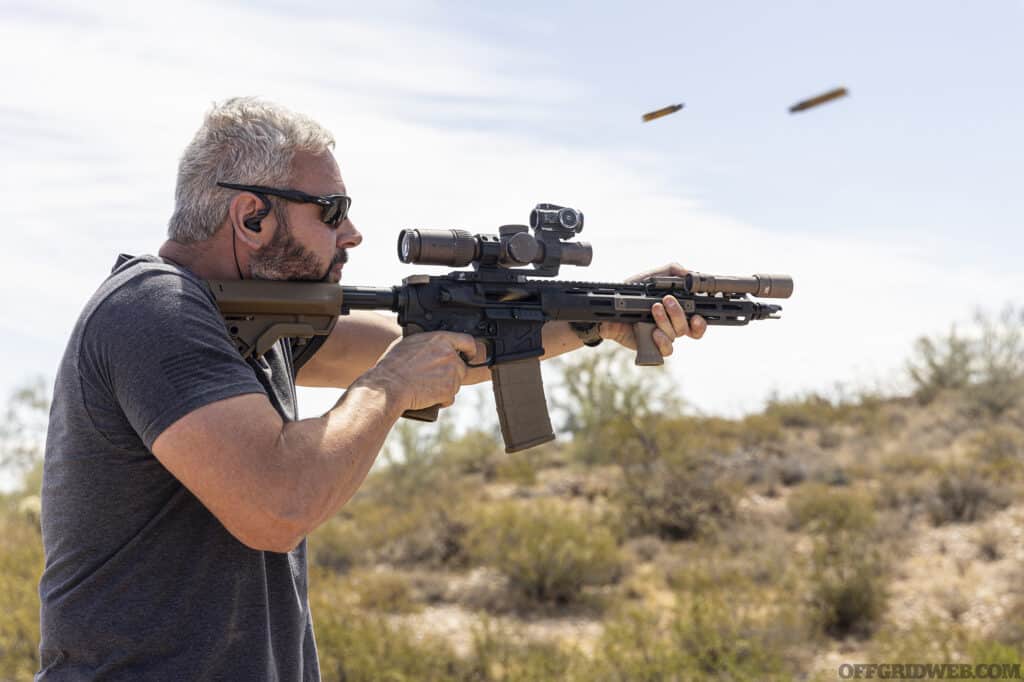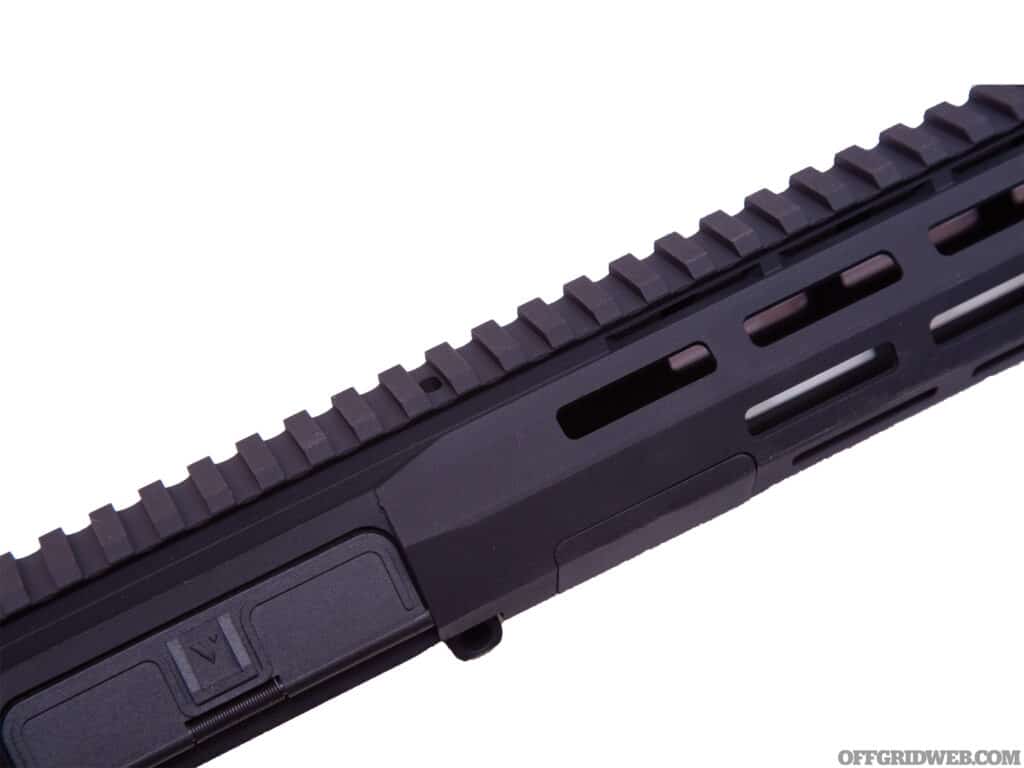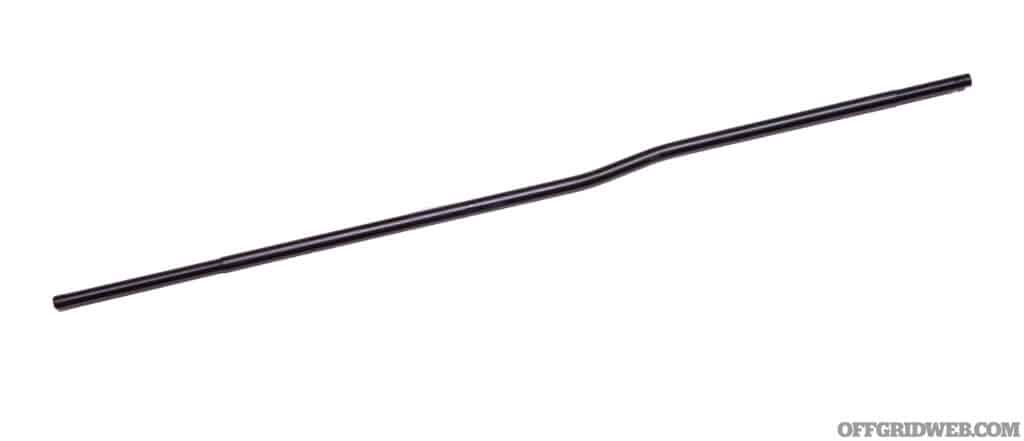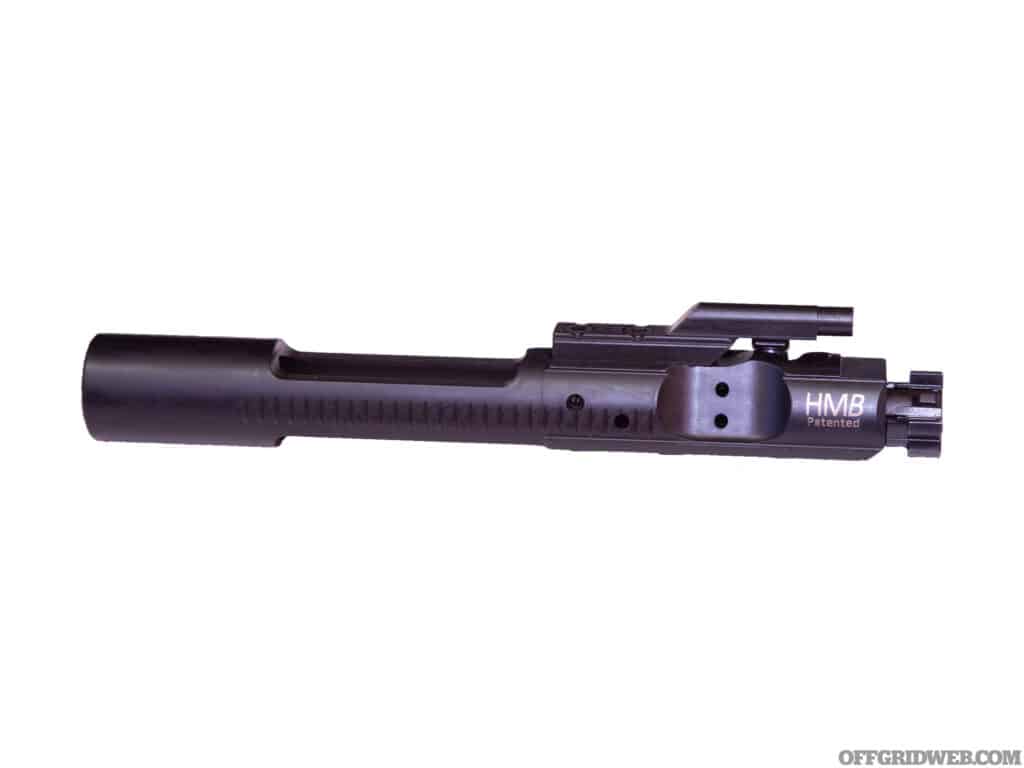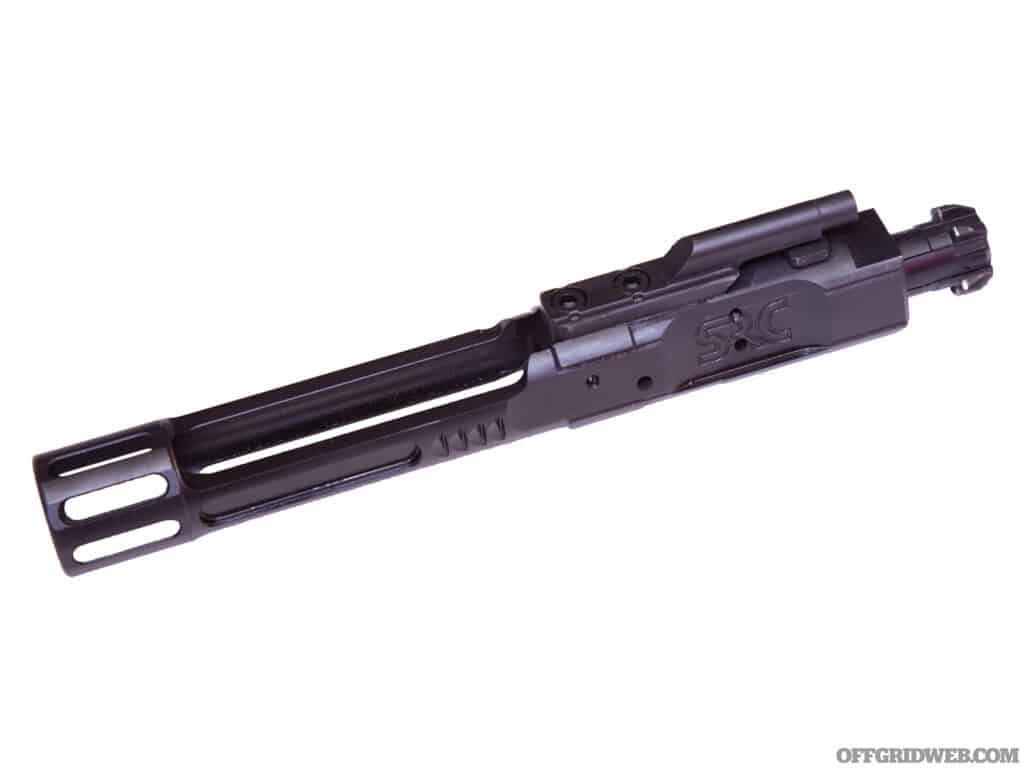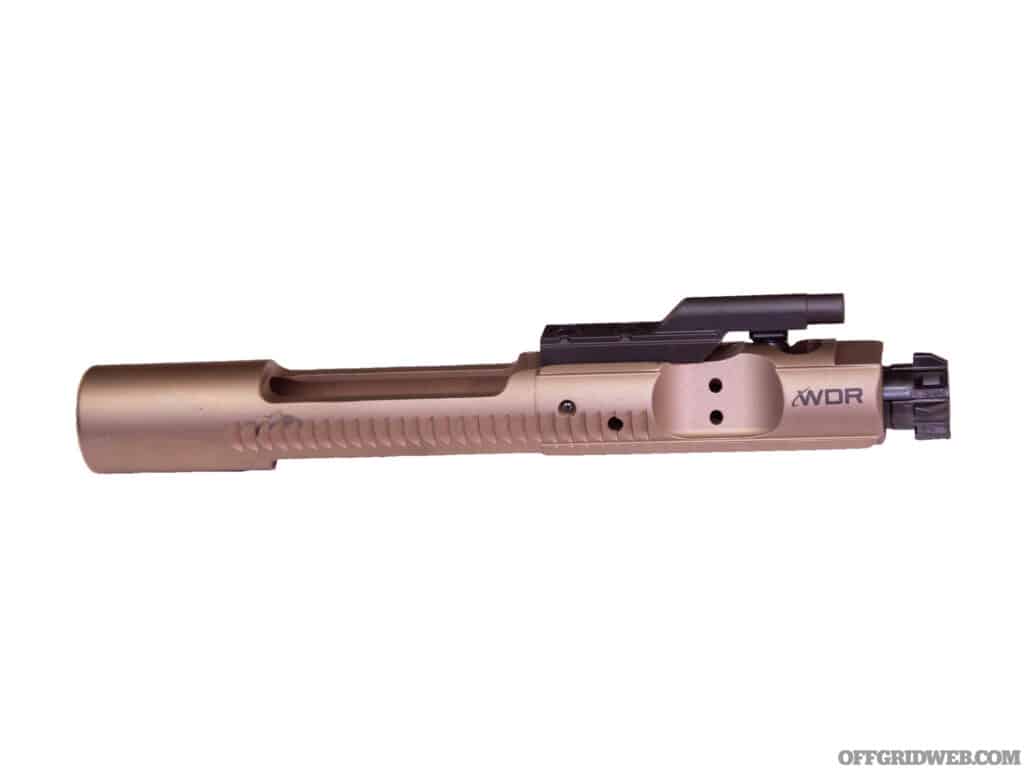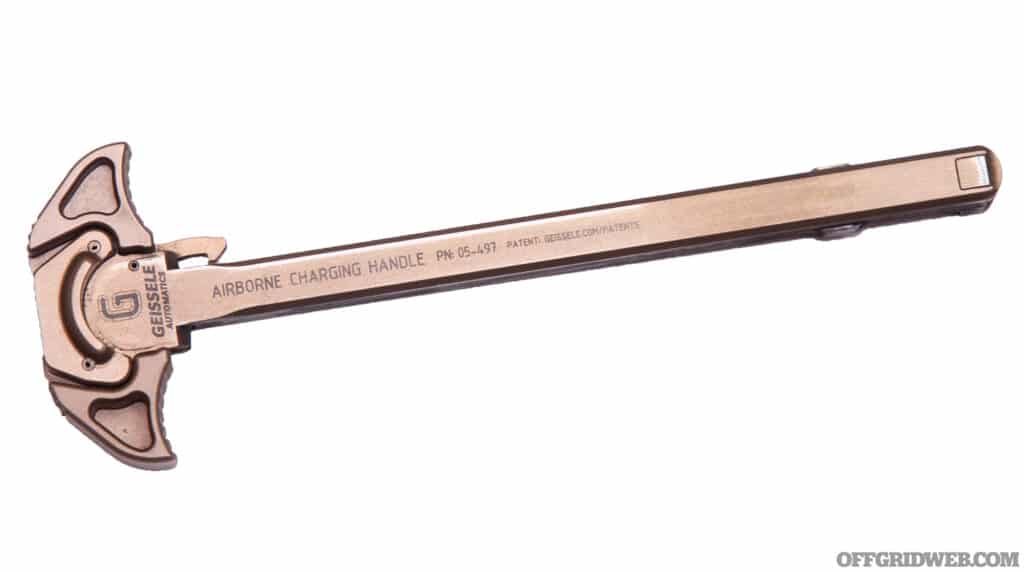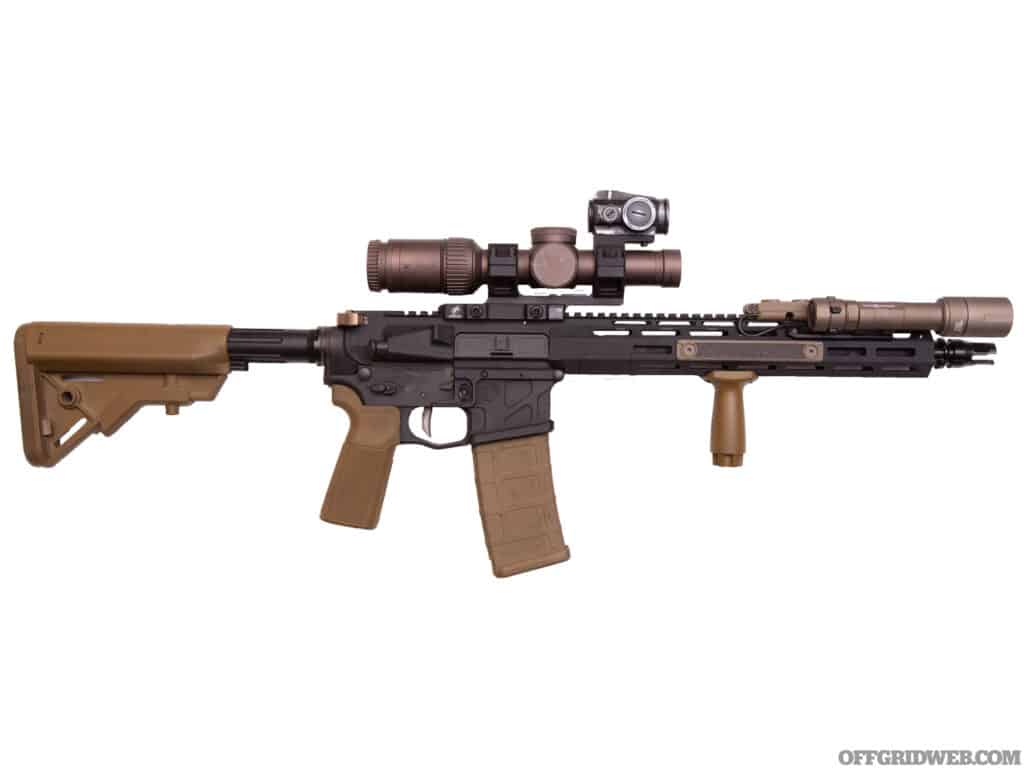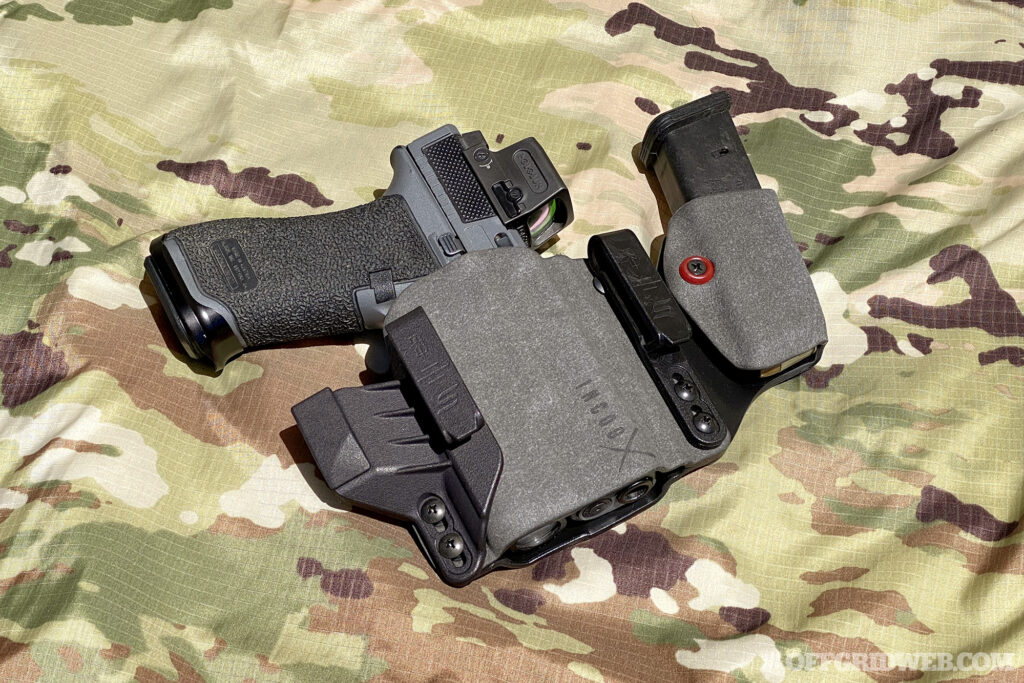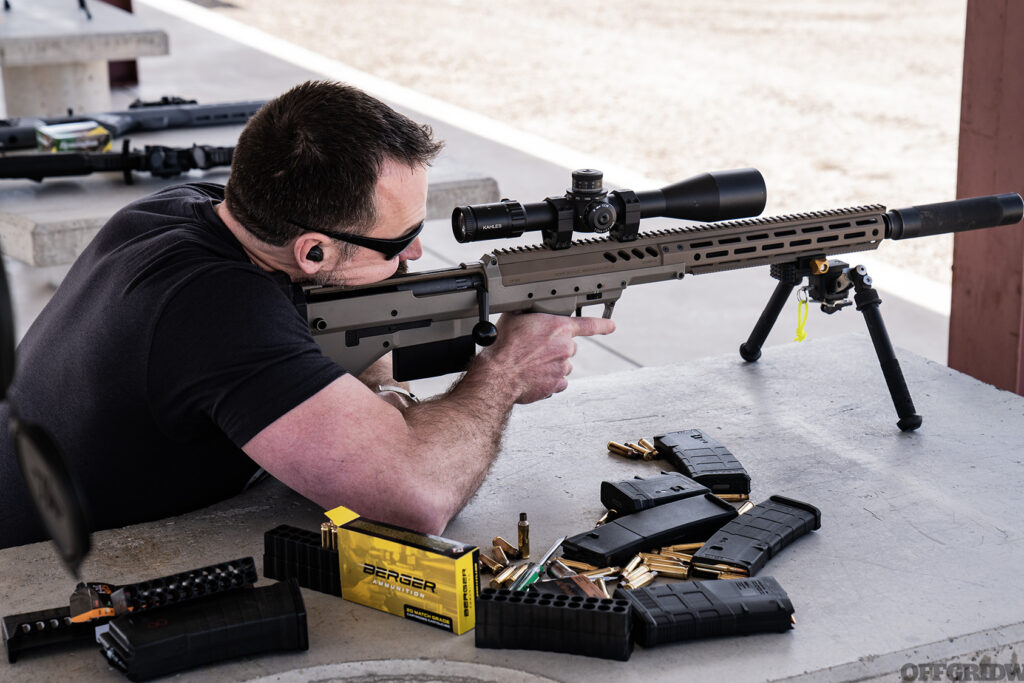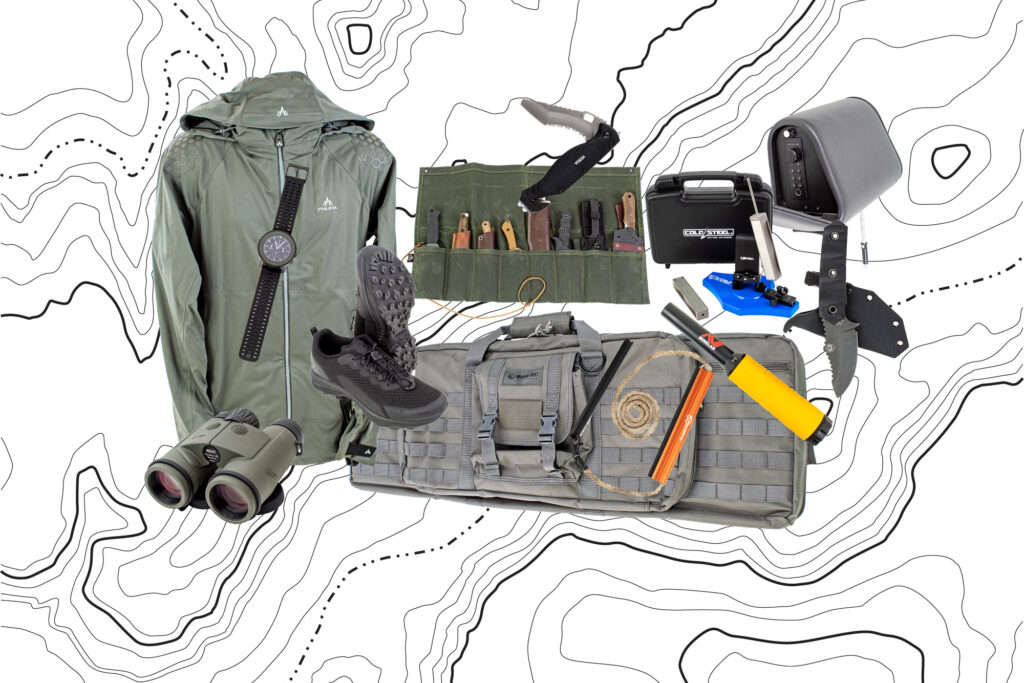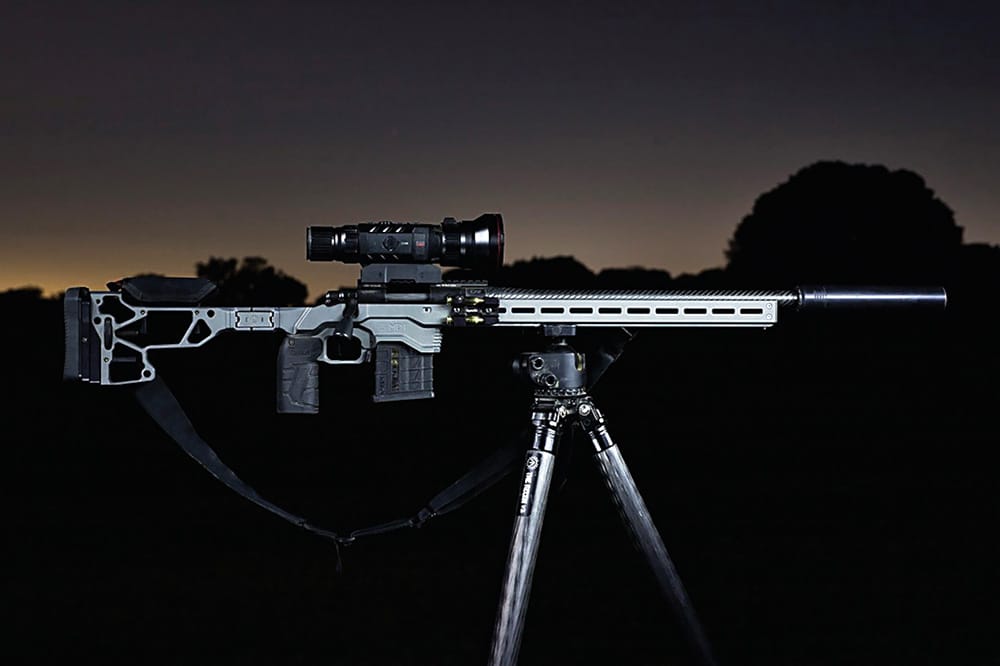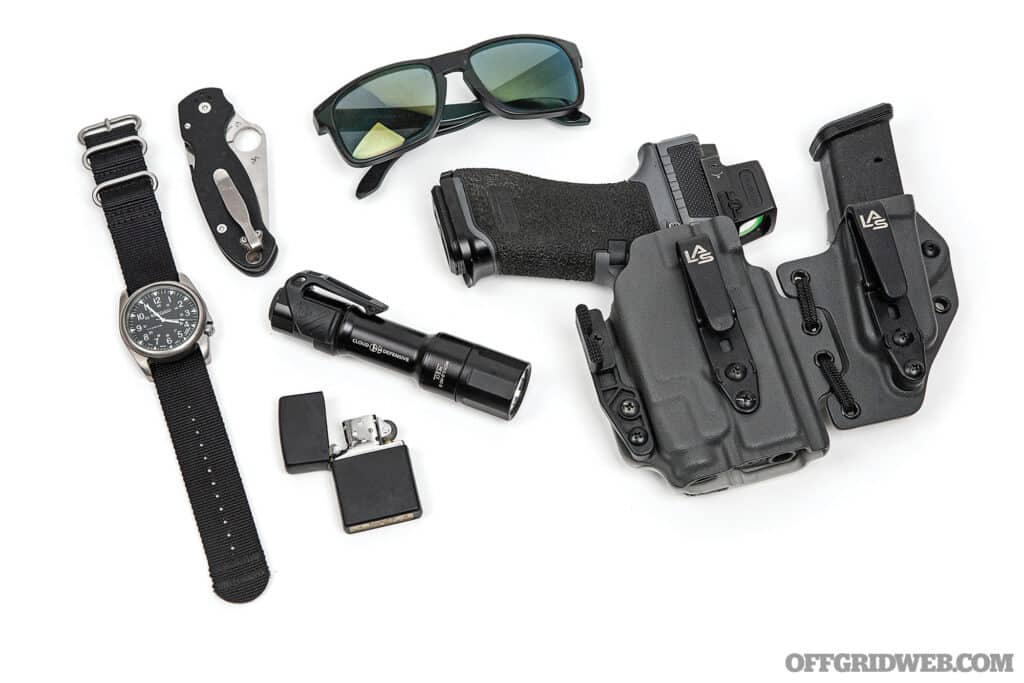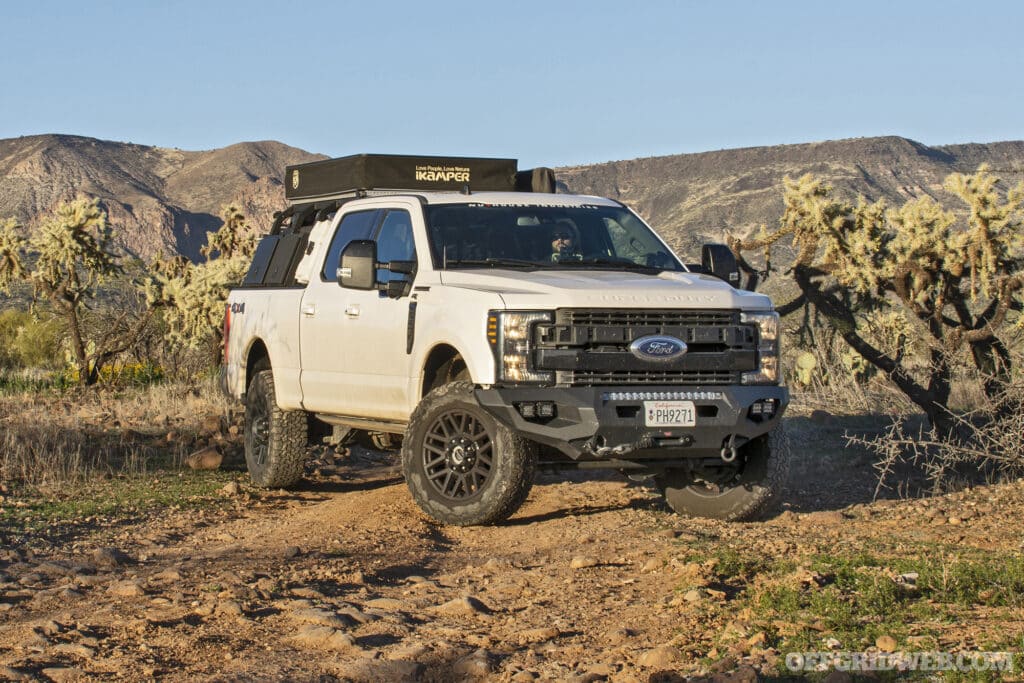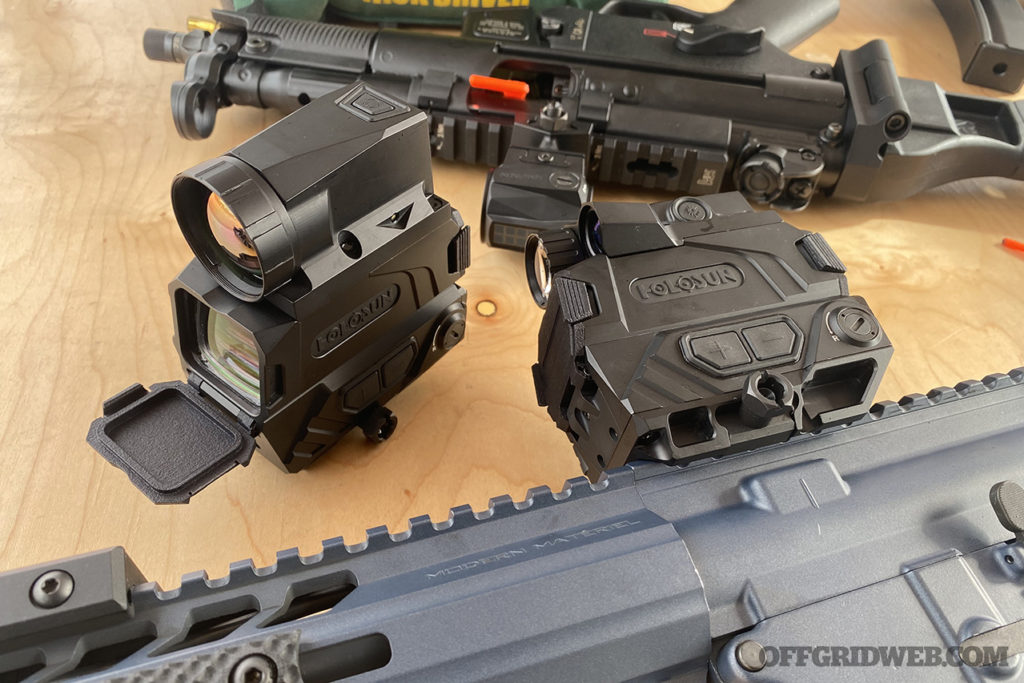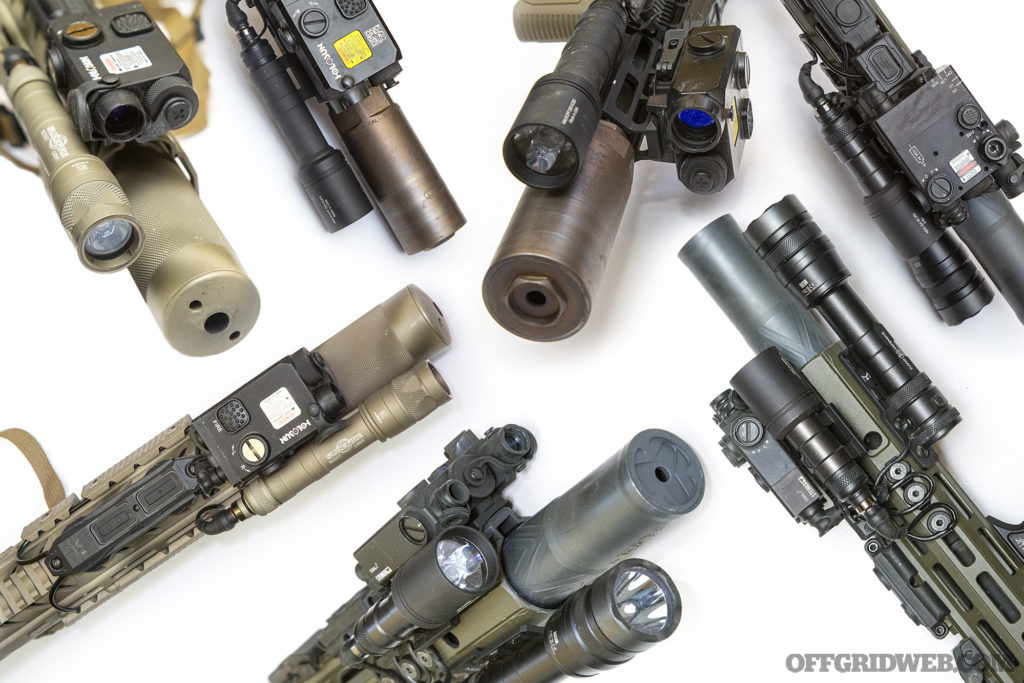What do nails, woodpecker lips, and wild west hombres have in common? They’re all tough. Which is exactly the quality you want from the special rifle you’ve designated to defend your family, home, and resources in the case of a severe, violent crisis. This doesn’t have to be the lawless wasteland portrayed by Hollywood. During the widespread civil unrest of 2020, there were plenty of places in the American heartland—places that didn’t even lose cell service or electricity—that remained functionally lawless for weeks at a time. Police chiefs told their officers not to respond to certain calls or enter certain neighborhoods. Mayors and city council members gave speeches about giving people “room to riot”. While the likelihood of needing to use a firearm in anger during a disaster is very low, it’s not zero. If you do find yourself face-to-face with that statistical anomaly, you’re going to want a rifle, maybe even a bugout carbine, that’s tough.
But what exactly does that mean? We’re not talking about accurate and reliable. We’re not talking about “runs fine, even if it’s a little dirty”. Webster’s Online defines tough, among other things, as: capable of enduring strain, hardship, or severe labor, characterized by severity or uncompromising determination. Some of this language is surely intangible and subjective. So how do we translate that into assessing a mechanical device? If you spend enough time on social media, someone will try and convince you that a rifle is tough by burying it in a shallow grave, dragging it behind their truck for 100 yards, or dropping it off the roof of their house onto concrete. While these types of “tests” (we use the term loosely) might make for good entertainment, they give you no empirical information about the weapon’s ability to endure hardship over time.
We tried our best to take a more analytical approach. Instead of resorting to gimmicky torture tests, we took a hard look at the individual stages of the AR’s operating cycle and identified as many mechanical failure points as possible. From there, we scoured the aftermarket to find products that would mitigate, reduce, or eliminate the potential for failure at that point. We’re not sure if the resulting upper receiver group is the most accurate, flattest shooting, or will run the most number of rounds before failing. What we can say with some confidence is that every phase of the operating cycle has been mechanically or structurally reinforced to endure environmental and operating conditions well above average.
NOTES
This article will be specific to the AR-15, as it’s one of the most ubiquitous rifles in America, both in terms of sales volume and cultural recognition. They are accurate, reliable, inexpensive, with a wide selection of ammunition and plentiful supply of spare parts. This dearth of replacement and aftermarket components is, in part, what has made this story possible. The amount of research, over-engineering, and sweat equity some of these companies have invested into making the strongest and most durable version of their individual products is commendable, and we’re happy to unite them all in this franken-build exercise. We also want to address the possibility of piston-driven AR’s. There’s absolutely nothing wrong with them. In fact, we’re big fans of several well-known piston rifles out there.
While they do introduce less fouling into the receiver, we disagree with the notion that they “run cleaner”. Instead, we’d argue they simply deposit their fouling elsewhere in the operating system. Furthermore, because there are no dimensional standards for AR pistons, adopting one will inevitably introduce proprietary parts into your rifle which will be inherently harder to come by if replacement is ever needed. While this is by no means meant to condemn them from preparedness applications, it’s food for thought. Since the direct impingement system is more prolific, and more financially accessible to a larger number of consumers, we focused on that. Some of the aftermarket upgrades seen here are not inexpensive. However, these upgrades can be made piecemeal to distribute the financial burden, or even cherry picked from this list based on your preferences and perceived needs. We also focused entirely on the upper receiver group because this is where the “work” takes place, meaning its where all of the carbon fouling and mechanical parts wear takes place.
RECEIVER
Our build started with VLTOR’s new MLOK VIS Lightweight MLOK Polylithic Upper receiver. These uppers have been out in KeyMod for some time, and now the line is being expanded to include MLOK versions in 10-, 12-, and 15-inch handguard lengths. Our sample upper is a pre-production prototype, but VLTOR says they expect them to hit market between 3rd and 4th quarter of 2023. The VIS Polylithic system is composed of an upper receiver and handguard which are manufactured separately before being mounted into fixtures and welded together to create a single unit. In order to make this work, the upper receiver is forged from 6013 aluminum instead of VLTOR’s normal 7075. The handguard is extruded from 6061, both hardened to T6 specifications. Ours also came with VLTOR’s new titanium graphite ejection port door. The VIS Polylithic features a unique port door in the bottom of the handguard at the receiver end. This is how the barrel nut is secured to the receiver with a special one-time-use barrel nut intended to be consumed in the installation process.
GAS SYSTEM
It’s been said that the heart of a rifle is its barrel. For this build, we chose a unique barrel offering from HM Defense. This barrel is incredibly unique in that the gas block is integrally machined into the barrel itself. Instead of fitting a collared gas block over the port, HM’s Monobloc barrel cuts the block directly into the barrel blank, eliminating any possibility for mis-alignment, slipping, leakage, or corrosion at the gas block. These 4150CMV barrels are button-rifled, triple-honed, chrome-lined, phosphate finished and listed as match grade by the manufacturer. They are chambered in 5.56mm NATO with a 1:8 twist rate. There are several lengths available, but our test barrel is of the 12.5-inch variety and features a mid-length gas system. Historically, 12.5 barrels with true mid-length gas systems can be a little finicky in terms of reliability, sometimes require particular gas system tuning or limitations on compatible ammo for consistent cycling. HM Defense claims the integrated gas block increases reliability by maximizing gas flow directly into the gas tube, thus eliminating the reliability problem sometimes found in this barrel configuration.
Speaking of gas tubes, we installed a V Seven Weapon Systems’ Extreme Environments Gas Tube into the monobloc. This tube is made from heat treated Inconel with a black DLC finish. Inconel is the same material often used for suppressor baffles because of its incredibly high resistance to high-temperature thermal cycling. Its ability to withstand repeated exposure to incredibly high temperatures without melting or becoming brittle makes it an ideal choice for parts that regularly come into direct contact with the super-heated expanding gasses caused by firing a weapon.
BOLT CARRIER GROUP
In researching optimized, enhanced, or reinforced bolt carrier groups, we came across a surprisingly wide array of options, each one purporting to address a specific weak point in the bolt or carrier. While we were not able to sample them all, we did get our hands on a couple of options for your consideration.
HM Defense makes more than Monobloc barrels. One of their other products is the HMB Bolt. This bolt is specifically designed to counter one of the better-known issues with the AR-15 bolt: cam pin hole shearing. Traditional AR bolt designs feature a cam pin hole that goes all the way through the bolt itself. Because of the size of the cam pin, this leaves relatively thin walls on either side of the cam pin hole. Sometimes these walls can snap, literally breaking your bolt in half and dead-lining your gun until you can find a replacement. The HMB bolt uses a proprietary bolt and cam pin design that leaves one side of the bolt completely intact to add extra structural strength. The bolt is 9310 steel while the cam pin is hardened 4340 steel. Both parts are black nitride finished.
Another option is the Sharps Rifle Company Relia-Bolt and Xtreme Performance BCG. The Relia-Bolt is made of heat-treated S7 tool steel, which Sharps describes as having higher tensile strength and resistance to softening at temperatures up to 1,000 degrees. The Relia-Bolt also features a unique tapered and rounded lug design meant to reduce the possibility of a malfunction caused by improper locking or unlocking of the bolt when the barrel extension becomes heavily fouled or impeded by debris. The front edges of the locking lugs are re-shaped to increase performance under harsh conditions, while the rear lug faces remain fully squared to achieve full lock-up when the bolt goes into battery. The Relia-Bolt can be purchased on its own, as part of the Sharps Xtreme Performance BCG. These sets include a “balanced bolt carrier” that is also made of heat-treated S7, with conservative lightening cuts on the back of the carrier. There are multiple finish options including black DLC, NiB-X, and FDE Zirconium Nitride. There is also a low-mass carrier available, in addition to BCGs features the Sharps Adjustable Gas Recoil System which includes a set screw in the back of the gas key to moderate gas flow into the carrier, allowing you to adjust gas flow based for suppressed use.
Finally, we have a bolt carrier from Walker Defense Research. This carrier is made from 8620 tool steel and finished in FDE DLC coating. The Walker carrier comes with Optimized Carrier Key Screws designed by Ned Christiansen. These screws have a beveled top edge that also has a shallow serration pattern cut into it so that, when staking the gas key screws, the staked material has an increased surface area to bite into. While sub-par factory AR’s have been known to have shallow staking, or skip it entirely, the Christiansen OCKS keys essentially lock themselves in. While we sourced our Sample OCKS from Forward Control Designs, and had the team at Walker Defense Research install them on our carrier—along with a Sharps Relia-Bolt—Drew Walker, the owner of WDR, was so impressed with the OCKS design that by the time you read this they will be standard on all Walker Defense BCGs. We love to see the owner of a company embrace innovation and include other small businesses in ways that make their own products even better.
ACCESSORIES
Finally, it came time to finish and accessorize our upper. We paired our BCG with a Gesissele Automatics Airborne charging handle. Geissele parts are well-known for their widespread adoption across the DoD, in particular within elements of Special Operations Command. If that isn’t a testament to their ability to endure prolonged hard use, we’re not sure what is. These handles are machined from a solid block of 7075-T6 aircraft aluminum, Type 3 hard coat anodized and feature a raised lip on the rear to mitigate gas blowback during suppressed use. The Airborne features lower-profile levers to reduce the amount of snagging on chest-mounted gear.
We also went back to Walker Defense Research NILE grip panels. The Non-slip InLaid Element panels snap directly into MLOK rail slots to enhance grip and insulate your hands from heat build-up. They are inexpensive, simple, lightweight, and durable. They offer a greatly-enhanced grip surface with no perceptible added weight.
We tipped the Monobloc barrel with a DeadAir KeyMicro flash hider. The KeyMicro mount is a smaller version of their ubiquitous KeyMo mounting system, and the KeyMo HUB mounts we have on hand are all compatible with KeyMicro muzzle devices. Their flash hider is compact and heavily built, with a rugged and widely available mounting interface for suppressors.
Finally, we added a pair of Vortex optics on an American Defense Manufacturing mount. Specifically, we used a Razor Gen II 1-6x paired with their SPARC Solar red dot, in an ADM Delta-C mount. Like the Geissele charging handles, Razor LPVOs have found an unlikely home with US Army Special Operations Command. The Delta-C mount places the scope at a 1.5-inch height-over-bore and their newly released line of direct-mount top rings, places the piggy-backed red dot at approximately 3 inches over bore.
Vertircal grips and hand stops are an intensely personal choice, but we strongly prefer short vertical grips on rifles for the added control we get, as well as for ideally positioning our thumbs over the top of the bore to actuate light control buttons for lights and lasers – which can be found on nearly all of our personal setups. In this case, we experimented with two: first we tried a Stubby MLOK Vertical Grip from Onyx Arms. This grip appears to be inspired by the old Knights Armament “broom handle” vertical grip – the first well-known example of this type of grip in military use. They were, in fact, standard issue as part of the original SOPMOD accessory package handed out to Special Operators to customize their new (at the time) modular quad-rail handguards. These grips are especially useful on shorter guns where a full traditional “palm grip” on along the underside of the handguard is not permitted due to lack of space or may be uncomfortable when using railed fore ends. The Onyx Arm grip updates the older designs by doing away with the rail clamp in favor of a pair of MLOK T-nuts for today’s sleeker handguards. The polymer they use is dense and stiff enough to prevent perceivable flexing even when driving the gun hard across a field of dispersed targets. Then we tried the Unity Tactical VFG – a more modern aesthetic with an oblong shape, flared at the bottom and textured on the front and back edges. Both were comfortable and functioned well with the VLTOR polylithic receiver.
Speaking of lights, we added a Cloud Defensive REIN 3.0 weapon light to this build. The REIN has staked its claim as perhaps the toughest and brightest rifle light on the market, with the 3rd generation putting out 100,000 candella and 1250 lumens with a 95-minute run time. The 3.0 also introduces dual-fuel capability, running on either a single rechargeable 18650 battery, or a pair of CR123s. While the former will always provide peak output and runtime, the latter allows fast swapping in the field when charging stations or power outlets may not be available. The REIN’s heavy-duty switching setup features a pressure pad with separate buttons for momentary and constant-on activation as well as a clicky tailcap button which will operate completely independently of the remote switch. While the two are hard-wired together as a single unit, you can literally cut the wire to the remote switch without losing tail-cap activation. The bezel diameter is only 1.3 inches, meaning it will play will with lasers or IR illuminators and, at just over 6-inches long, it won’t take up a ton of real estate on the handguard. To that end, the REIN is specifically designed and tested to run with the head running alongside the muzzle device. Even if you have a multi-chamber brake with high gas output, the REIN will function just fine for the entirety of its service life. Just don’t forget to clean the lens as needed. The REIN is IPX8 rated for waterproofing and has been function tested to run even after 24 hours submerged in 100 feet of water. It also sports a front lens that’s 3mm thick and meant to withstand direct hits from force-on-force marking rounds, so there’s no need to cover or baby this light if you train hard with your carbine. If something does fail, Cloud’s lifetime warranty will cover just about any failure case you can think of.
ROUNDS DOWNRANGE
Of course, all of this leads us back to the question most of you have already asked yourselves while reading this: “Is all this really necessary?”
You will have to answer that question for yourself. Our goal here was not to give you an exact blueprint that needs to be replicated to have a worthwhile SHTF rifle, but to present a buffet of what’s available in terms of mechanical upgrades. The cost, in both money and man-hours, required to build this exact rifle is substantial and perhaps prohibitive for many. But maybe there are a couple of individual components here that pique your interest or that you deem worth the expense to augment an AR you’ve already got in your safe. As always, the existence of the OFFGRID brand is driven by the mission to provide you with the maximum amount of information to help you make the most educated decisions possible when budgeting for emergency gear.
Related Posts
- Tailor-Made ARs: 11.5″ Suppressed SBR Build
- Aiming at Entry-Level AR-15s for Survivalists
- Tailor-Made ARs Part 2: A Veteran’s General Purpose AR-15
- Tailor-Made ARs: Choosing the Best AR-15 Mods
- AR-15 Home Defense: Rogue Methods Low-Profile Carbine Class Review
Related Posts
The post Toughest AR-15 Upper: Apocalypse-proofing Your Bugout Carbine appeared first on RECOIL OFFGRID.


